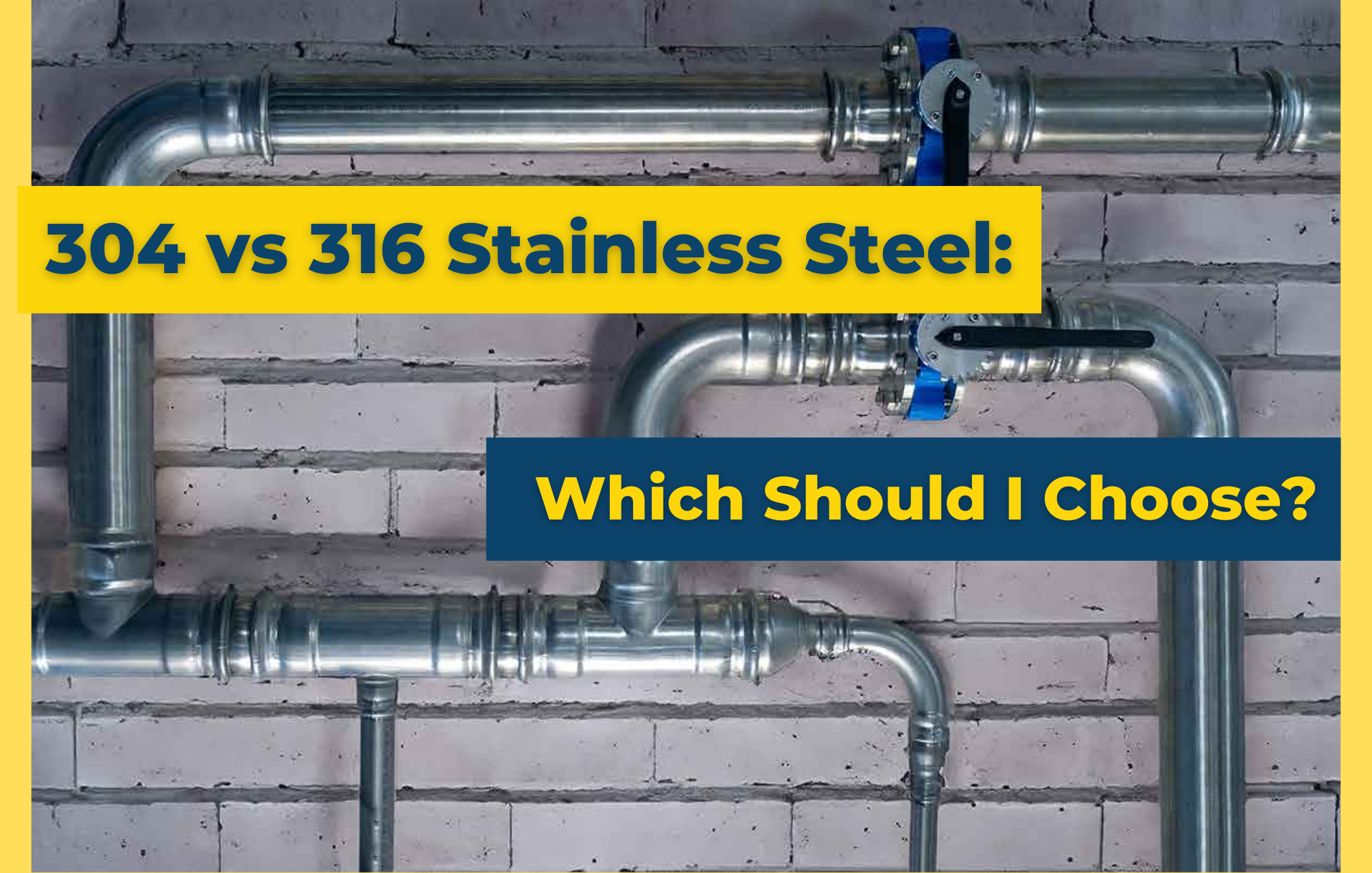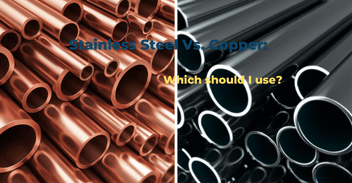304 vs 316 Stainless Steel: Which Should I Choose?
Selecting the right grade of stainless steel for your piping project is a crucial early step that can influence both the upfront costs and the long-term performance of your system. If you’re beginning your research into stainless steel piping, you’ll quickly encounter two of the most common grades: 304 and 316. Each has its own strengths, weaknesses, and ideal applications, and understanding the key differences will help you make an informed decision no matter which brand, supplier, or system you ultimately choose.
Introduction: Why The Grade of Stainless Steel Matters
Stainless steel is a popular choice for piping systems across a wide range of industries, thanks to its durability, corrosion resistance, and versatility. The grade you select can determine how well your piping stands up to the environment, how much maintenance it will require, and what you can expect to pay both initially and over the life of the system.
If you’re at the early stages of planning a project, you might be asking:
- What are the main differences between 304 and 316 stainless steel?
- Which grade is best for my application?
- How do costs compare, and what factors should I consider beyond price?
Let’s break down these high-level questions to help you move forward with confidence.
Understanding Stainless Steel Grades
Stainless steel grades are defined by their alloy composition, which affects properties like corrosion resistance, strength, and suitability for different environments. The two most widely used grades in piping are 304 and 316, both part of the austenitic family.
- 304 Stainless Steel: Contains chromium and nickel, offering good corrosion resistance for many general service applications.
- 316 Stainless Steel: Adds molybdenum, which significantly improves resistance to chlorides and harsh chemicals.
Both are generally non-magnetic and suitable for a wide range of uses, but their performance diverges in more demanding environments.
Cost Considerations: 304 vs 316
Budget is often a key factor in the early stages of project planning. On average, 304 stainless steel piping is 20-30% cheaper than 316 due to its simpler alloy composition. This makes 304 an attractive choice for projects where the environment is not especially harsh or corrosive.
However, it’s important to look beyond just the initial purchase price. While 316 stainless steel comes with a higher upfront cost, its superior resistance to corrosion can result in lower maintenance and increased life expectancy over the life of the system especially in environments exposed to salt, chemicals, or frequent cleaning.
Both grades are available in modern press-fit piping systems, which can reduce installation costs by up to 30% compared to traditional welding and significantly speed up the installation process in applications where they are suitable.
What Applications are 304 and 316 Best Suited For?
The choice between 304 and 316 often comes down to the specific application it is being used for and environment it is installed in.
304 Stainless Steel is suitable for:
- General services and indoor environments
- Applications with lower exposure to corrosive elements
- Hot and cold water distribution
- Glycol
- Oil and Lubricant lines
- Heating and cooling systems
316 Stainless Steel is recommended for:
All of the applications 304 is suitable for plus:
- Some coastal, marine, or chemical processing environments
- Areas with exposure to de-icing salts
- Food, beverage, and pharmaceutical processing (with appropriate certifications)
- Potable water and gas systems requiring strict standards
The addition of molybdenum in 316 stainless steel makes it much more resistant to pitting and crevice corrosion, which can be a concern in aggressive or variable environments.
Pros and Cons: A High-Level Comparison
|
Grade |
Advantages |
Disadvantages |
|
304 Stainless Steel |
|
|
|
316 Stainless Steel |
|
|
Who Can Install Stainless Steel Piping Systems?
Typically, if you are using a welded system, you will require ticketed and trained personnel to install the pipework. Modern press-fit systems, available in both 304 and 316 grades, provide installers with the flexibility to utilise less experienced but competent and qualified labour resources for applications where press-fit can be used. This gives pipeline installation companies greater resource capacity within their teams.
Press-fit technology not only gives greater flexibility in labour resources but also offers faster installation, creating time and labour savings, plus can reduce compliance requirements and costs such as hot work permits and QA processes.
Making the Right Choice for Your Project
When deciding between 304 and 316 stainless steel piping, consider these key factors:
- Environment: Will the system face exposure to saltwater, chemicals, high humidity, or corrosive elements?
- Application: What is the primary use? Is it general services, potable water, chemical processing, etc.?
- Budget: Are you optimising for initial capital savings or long-term value?
By evaluating your project’s unique requirements against these factors, you can select the stainless steel grade that offers the best balance of performance, durability, and cost-effectiveness.
Conclusion: Setting Your Project Up for Success
Choosing the right stainless steel grade at the outset can help you avoid costly maintenance, downtime, and premature replacements down the road. Both 304 and 316 have their place in modern piping systems, and your decision should be guided by the specific needs of your environment and application.
If you’re ready to take the next step or want more technical details about stainless steel piping systems, learn more about stainless steel piping solutions here.


%20(1).png?width=352&name=Copy%20of%20WW%20%20Blog%20headers%202023%20(27)%20(1).png)

.png?width=352&name=Waterworks%20%20Europress%20compressed%20air%20email%20graphic%20(1).png)